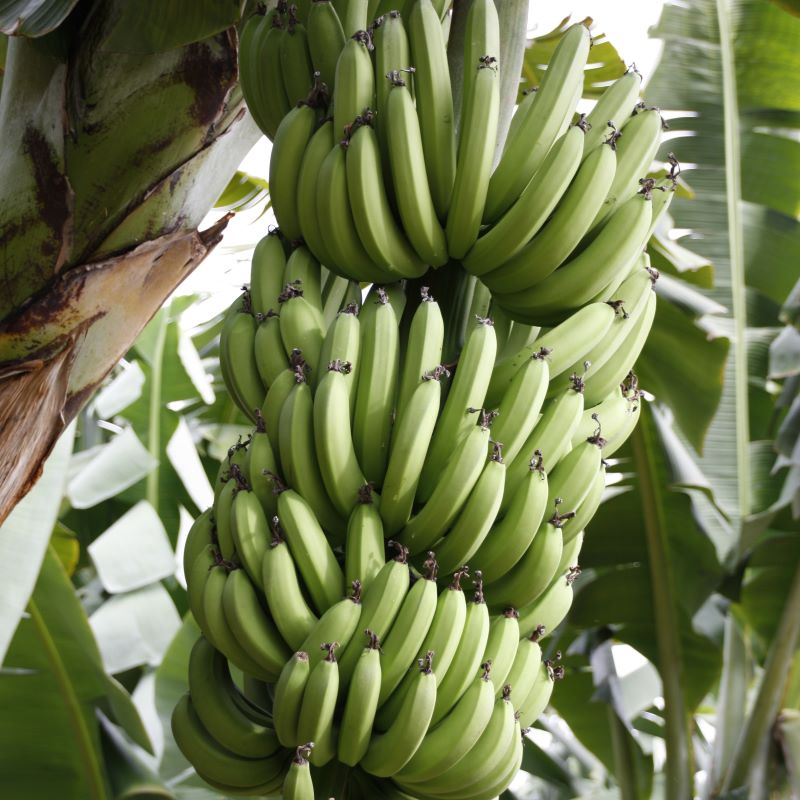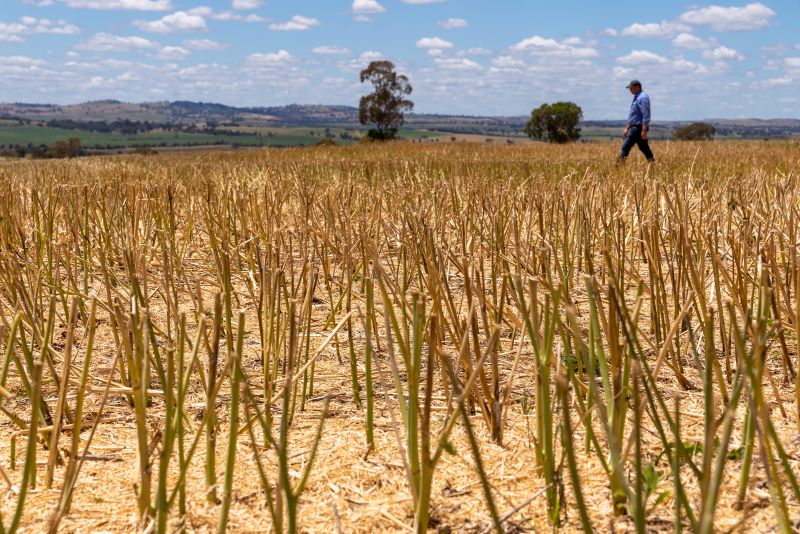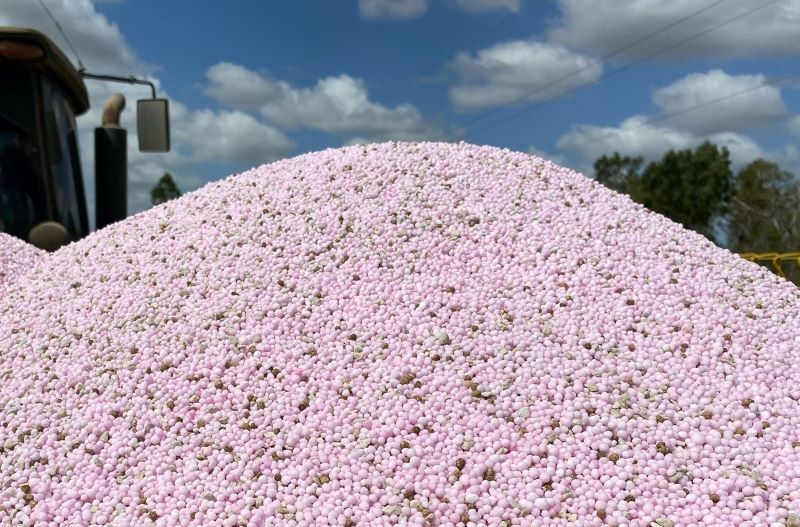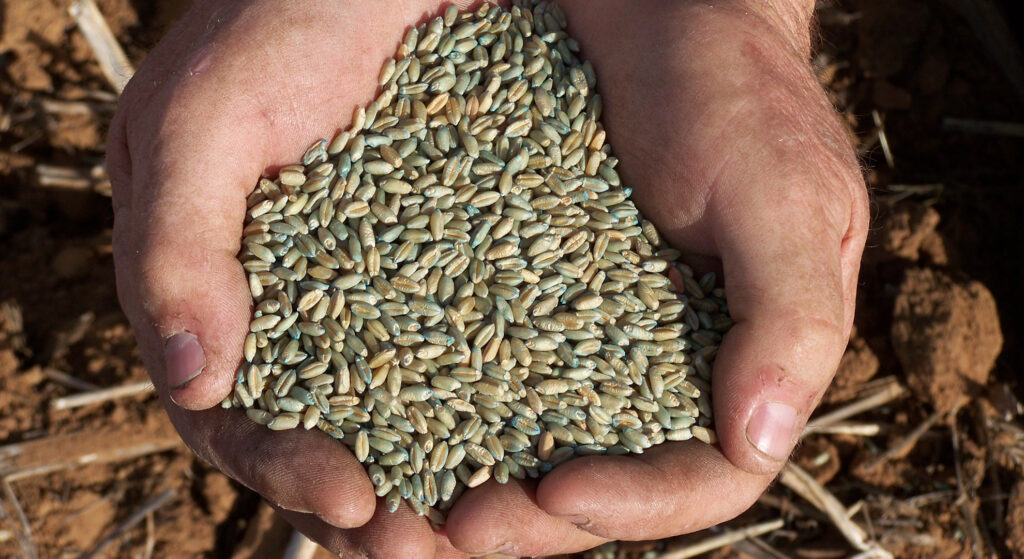Agronomic Insights

Planning nitrogen applications and rethinking potential urea nitrogen volatilisation losses
26 March 2024
Jim Laycock – Senior Technical Agronomist
Nitrogen (N) is an essential nutrient for dry matter production, shoot density and yield. When cereal crops begin to mature, nitrogen within the plant is redirected to developing grains then carbohydrates (from photosynthesis) are deposited within the grain. It is the level of carbohydrates that determines not just grain size and yield but the final grain protein level.
Canola, like cereals, requires adequate levels of nitrogen to support dry matter production, flower formation, and potential yield. It is particularly important during the early growth stages.
The first step in planning for nitrogen application is a simple budgeting process to assess nitrogen requirements. For wheat budget 40 kg of N per tonne of grain and for canola 80 kg/N/t. Knowing the nitrogen demand of crops is essential in determining nitrogen requirements and maximising nitrogen use efficiency.

Aim to maximise Nitrogen Use Efficiency
- Ensure all other nutrients (P, K, S, Zn, Cu, B, Mo) are non-limiting and nitrogen is the only limitation.
- Apply nitrogen prior to periods of rapid growth in cereals and canola.
- There is a full moisture profile and a favourable seasonal outlook.
- Consider Green Urea NV® to reduce losses of nitrogen through volatilisation.
- The paddock is free from potentially limiting soil conditions – compaction, sodicity, acidity, salinity, sub-soil constraints.
- Root disease is non-limiting – crown rot, rhizoctonia, take all.
- Leaf disease is non-limiting – strip rust, yellow leaf spot, Septoria.
- Weeds and insects are controlled.
What is volatilisation and when does it happen?
Urea or urea-based blends, when broadcast on the soil surface, can be susceptible to ammonia (NH3) loss (volatilisation). Volatilisation potential is determined by the ratio of ammonia to ammonium (NH4) in the product and soil pH.
Volatilisation in SE Australia has been measured as high as 26% of total N over a period of 20 days on an alkaline clay applied (light rain post application) in the first week of September. (Turner, 2010).
The higher the initial soil pH and the pH in the urea granule reaction zone, the greater the potential for volatilisation of the ammonia.
In addition to product and soil pH the other factors that will increase NH3 volatilisation from topdressed urea are:
- light rain post application, enough to dissolve the urea granule but not enough to wash the dissolved granule into the soil,
- crop residue on the soil surface can leave the urea granule “stranded” away from the soil surface,
- low buffering capacity soil,
- low soil CEC soil,
- temperatures above 18°C,
- wind, and
- application to a moist soil that dries down post application.
The effect of product
Different N-fertilisers applied to the same soil type can react in very different ways and have significant differences in potential losses. Swapping from urea to ammonium sulphate products may be sound in most cases, but not where the soil has free lime (>2% calcium carbonate CaCO3) (Schwenke 2011). On these soils the risk of volatilisation can also be high.
New research on pH and buffering capacity
New research findings on soils in Western Australia in a recently published Soil Research journal paper (Hearn LO et al. 2023)
looked at the effect that pH, CEC, clay content, organic carbon, and pH buffering capacity (pHBC) has on volatilisation when urea is broadcast.
The results from this incubation study identified the potential for high losses of ammonia when urea is surface applied onto moistened acidic and neutral cropping soils. Of the applied urea-N, between 0.9% and 25% was volatilised. The implication is that grain production on sandy, acidic soils with low pHBC could lead to substantial NH3 volatilisation losses if urea is broadcast.
So, the safest application is onto dry clay soils (which tend to have a higher buffering capacity), in low humidity conditions with no wind and sufficient rainfall to move the urea into the soil within a few days of the application.
Right product – nitrogen losses when topdressing
Green Urea NV® is a urea-based product that is treated with N-(n-Butyl)-thiophosphoric triamide (NBPT). When NBPT is added to urea it inhibits the activity of the urease enzyme for a period of up to 14 days. During that period the losses of N as NH3 through the volatilisation pathway from the surface applied urea are significantly reduced and N is still present for the next rainfall event.
Green Urea NV® proven in field trials
Green Urea has been tested in field trials over a number of years and sites.
Wheat productivity and nitrogen use efficiency was measured at three sites in the Wimmera region of Victoria, Australia between 2012 and 2014. At those sites NBPT (the urease inhibitor in Green Urea NV®) increased yield (+ 7–11%) in 2 of 3 years compared to unamended urea (Wallace et al, 2019). In another field study the N management strategy significantly affected losses of fertiliser-N depending on seasonal conditions, with NBPT producing significant benefits in reducing losses of top-dressed urea under dry seasonal conditions. (Armstrong et al, 2021)
In a meta-analysis of 15 Incitec Pivot Fertilisers topdress nitrogen trials conducted across SE Australia 2005-07, Green Urea NV® gave a statistically significant yield response compared with the control and urea. Green Urea NV® also gave a significant protein increase compared with the control and urea.
Incitec Pivot Fertilisers trial work in the Mallee in 2014 also demonstrated the effectiveness of Green Urea NV® over urea with an early September top-dress and 17 days before a welcome rainfall event of 35 mm. The Green Urea NV® treatment returned a significant grain yield response over urea (0.41 t/ha), protein response (0.7%) and improved nitrogen use efficiency from 33.7% for urea to 60.5% for Green Urea NV®.
Summary
When top dressing large acreages with Green Urea NV® topdressing can commence four to six days before a significant rainfall event with confidence that all the nitrogen is still available for incorporation into the soil profile when that rain front comes through.
The cost of N losses on highly N responsive situations will be more than just the value of N. If grain yield is compromised, which is highly possible on low N soils, the outcome will be worse.
All farming systems should aim to maximise nutrient use efficiency. When choosing the most appropriate product to apply consideration should be given to the rate of application, the frequency of application, the timing of the application, the economic objectives, and any environmental consequences.
Further Information
For further information contact Jim Laycock on 0427 006 047 or jim.laycock@incitecpivot.com.au.
References
Ammonia volatilisation losses from urea applied to acidic cropping soils is regulated by pH buffering capacity L. O. Hearn, L. Barton , G. D. Schwenke and D. V. Murphy Soil Research 61(7) 685-696 https://doi.org/10.1071/SR23044
Turner DA, Edis RE, Chen D, Freney JR, Denmead OT (2012) Ammonium volatilisation from urea fertilizers applied to cereals in two cropping areas of southern Australia. Plant and Soil 93: 113-126.
Ashley J. Wallace . Roger D. Armstrong . Peter R. Grace . Clemens Scheer .Debra L. Partington Nitrogen use efficiency of 15N urea applied to wheat based on fertiliser timing and use of inhibitors. Nutr Cycl Agroecosyst (2020) 116:41–56
Roger Armstrong, Ash Wallace and Katherine Dunsford, GRDC Update 2021, Nitrogen fertiliser use efficiency ‘rules of thumb’ – how reliable are they? Schwenke G (2011) Nitrogen volatilisation: factors affecting how much N is lost, and how much is left over time. GRDC Update Papers, Goondiwindi. https://grdc.com.au/resources-and-publications/grdc-updatepapers/tab-content/grdc-update-papers/2014/07/factors-affecting-how-much-n-is-lost-and-how-much-is-leftover-time.
Resources
DOWNLOAD INSIGHTDISCLAIMER
This is a guide only, which we hope you find useful as a general tool. While IPF has taken all reasonable care in the preparation of this guide, it should not be relied on as a substitute for tailored professional advice and IPF accepts no liability in connection with this guide. Incitec Pivot Fertilisers manufactures and sources fertilisers from other suppliers. The fertiliser supply chain extends beyond the company’s direct control, both overseas and within Australia. Incitec Pivot Fertilisers hereby expressly disclaims liability to any person, property or thing in respect of any of the consequences of anything done or omitted to be done by any person in reliance, whether wholly or in part, upon the whole or any part of the contents of this article.





